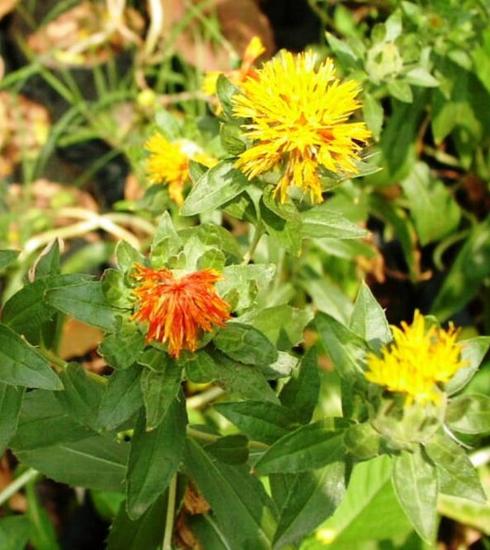Carthamus tinctorius
A rather special plant, Carthamus has been used for thousands of years as a dye for food and cloth and as a source of cooking oil
Denise Bush
Viernes, 14 de julio 2017, 12:04
Commonly called Safflower or false saffron, Carthamus (Cártamo in Spanish) is an attractive addition to the garden. It is also highly valued commercially for the oil from its seeds which is richer in unsaturated fats than olive oil.
The flowers have been used for thousands of years to dye cloth and as a saffron substitute. Fabrics dyed with safflower have been found in the tombs of the Egyptian kings and Tutankhamun had garlands of safflowers in his burial chamber.
Pruning rambling roses
-
GArdening hints for July
-
Most rose bushes are pruned in the winter when they are dormant, but rambling roses, which flower just the once around June time, should be pruned immediately after flowering. The first prune should be done when they are two to three years old, when they have formed long arching canes which can be tied into a trellis or frame. Remove one in three of the stems that have flowered and shorten any new growth by about two thirds.
-
Climbing roses (ones that flower all through the summer) bloom on old wood so if left until the spring you could effectively cut away all the stems that are going to bear flowers. They will benefit from dead-heading at this time of year and then light pruning in late autumn or winter. Always remove any dead or damaged wood that may become infected and weaken the whole plant.
Carthamus is native to East Asia but is grown commercially in many parts of the world including Spain.
It is drought- hardy, developing a tap root up to two and a half metres long, and is not fussy about soil, as long as it is well drained. To get the most flowers (usually one to five on each branch and each flower head will develop around 15 to 20 seeds) it needs long periods of sunshine so a position which receives full sun all day is best.
The thistle-like flowers can be bright yellow, orange or red and open from fat, round buds throughout the summer.
The leaves of many species of Carthamus are spiny but there are some varieties without spines such as C. tinctorius Kinko. The leaves can be eaten cooked like spinach or raw.
Although drought-resistant, Carthamus will benefit from regular watering from spring until flowering finishes. The seeds can be harvested at the end of the summer when the plant is completely dry and can be roasted, fried or added fresh to foods. They are said to help reduce heart disease and lower cholesterol in the blood.
The oil has many uses besides cooking and is traditionally used to treat rheumatism and skin complaints. It was also used a substitute for diesel, in varnishes and paints as it does not turn yellow with age, for lighting and for waterproofing.
Carthamus make excellent cut flowers and retain their vibrant colours when dried. They are an ideal plant for informal, wild gardens and attract lots of pollinating insects.
